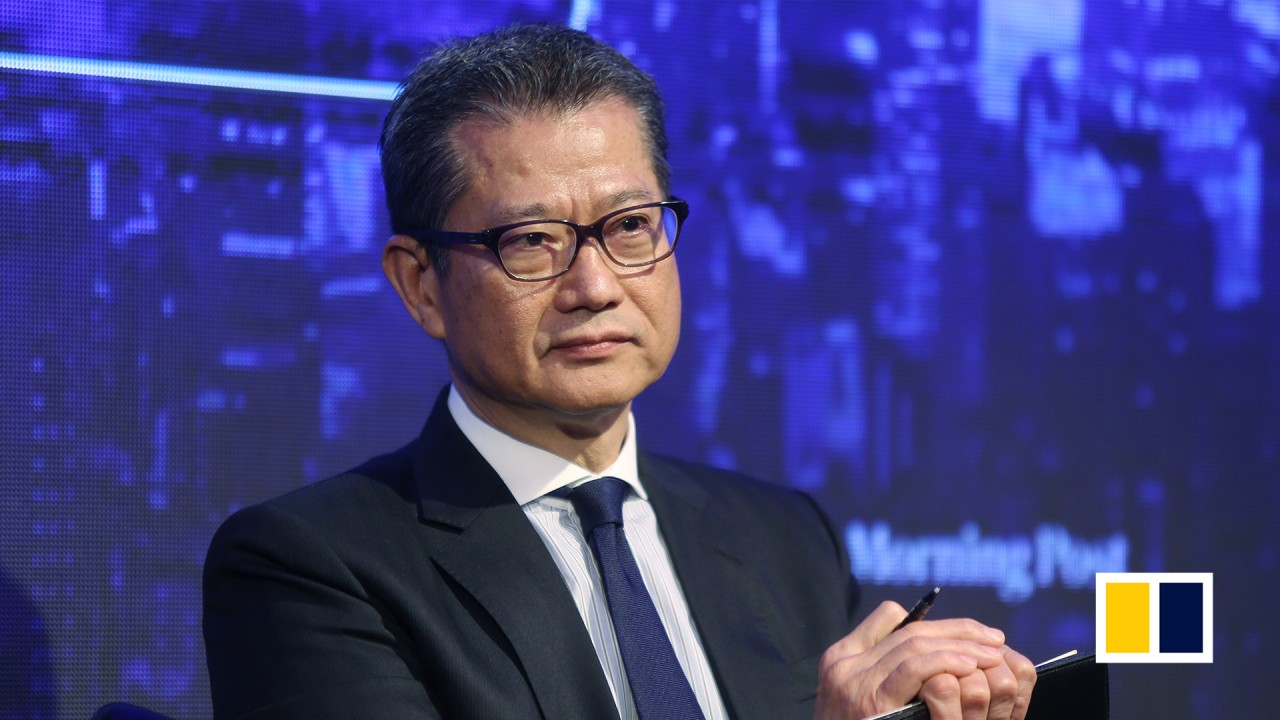
Hong Kong’s office market will bottom out in the second half this year as economic activity picks up, Colliers says
- Office rents and prices might edge up in 2022 by 3 per cent and 4 per cent, respectively
- Short commutes, small homes mean it is not always practical to work from home, and some clients told Colliers that they actually prefer to work in offices, firm’s head of research says
Colliers International has become the first property consultancy to sign post a recovery in Hong Kong’s office market.
The Toronto, Canada headquartered company said the market could bottom out by the middle of this year, with prices rebounding by about 25 per cent between next year and 2025 to pre Covid-19 levels despite the rising trend of work from home, decline in co-working operators’ footprints and corporate downsizing amid the pandemic, and a record recession in Hong Kong’s economy.
If vaccines contain Covid-19 in the first half of this year, this could lead to a gradual pickup in economic activity in the second half from a record recession. As a result, office rents and prices might edge up in 2022 by 3 per cent and 4 per cent year-on-year, respectively. Office prices might extend the rebound by around 25 per cent between 2022 and 2025, the consultancy said.
But before any rebound, grade A strata-title office prices will face a 10 per cent correction this year, with rents dropping by another 7 per cent, Colliers said.
The city’s office market has seen dramatic changes in economic cycles over the years. Hong Kong’s average price of grade A offices dropped by 34 per cent between 2000 and 2003 to HK$3,660 (US$462) per square foot, Colliers said. Since then, office prices have rebounded, rising six times to HK$25,770 per square foot until the most recent peak, in 2018, despite a drop following the global financial crisis in 2009.
Comparatively short commutes and generally small homes meant it was not always practical to work from home in Hong Kong, Tang said. Some clients had told Colliers that they actually preferred to work in offices, she added. “Even if the total number of staff in an office were to be reduced due to work from home, this impact [may] be balanced off by the requirement of spacing out staff within offices,” Tang added.
The view that Hong Kong’s office market will bottom out in the second half of this year was also supported by Martin Wong, associate director of research and consultancy in Greater China at Knight Frank. “We expect leasing activity to be more robust in the coming quarters, as more multinational corporations – that deferred corporate real estate plans owing to the Covid-19 pandemic – reactivate their plans in the near term,” he said.
But companies, especially multinationals, were also using the pandemic as an opportunity to review their workplace strategies, Wong said. Some companies were saving on capital costs and downsizing their real estate footprints.
The rental cycle was likely to bottom out in the second half of this year or early 2022, said Nelson Wong, head of research at JLL in Greater China. But he said sub markets where vacancy levels were high, such as Tsim Sha Tsui and Kowloon East, were likely to see rents staying suppressed for longer.
Last year, multinationals and larger companies – with more supportive information technology platforms – were more encouraging as far as work from home is concerned, according to S&P Global Ratings, while smaller companies were more reluctant to embrace the practice. “The shift is likely to reduce demand for office real estate over the next few years,” said Esther Liu, director at S&P Global Ratings. “The previous income stability of the office sector … will no doubt waver.”
When leases come up for renewal, the ratings agency said it expected to see contract terms renegotiated. Leases were likely to be shorter, with options for extensions, as many tenants were likely to remain undecided on future space needs.
In the post-pandemic world, tenants will have greater bargaining power, as the need for flexibility on office space grows, S&P said in a report released on Thursday. But it also noted factors – such as high residential density and the proximity and convenience of commuting to office premises – would work against prolonged work from home arrangements in Hong Kong. Also, while multinationals have begun cutting headcount and reducing floor space, some spaces in Hong Kong would be taken up by Chinese financial institutions.
The city’s office rents could drop 20 per cent from 2020 to 2021, if the vacancy rate rose from 7.3 per cent in late 2020 to 10 per cent in 2021, S&P added.
The Colliers forecast also follows a 2.3 times year-on-year rebound in office property transactions in the first quarter to 341 deals, according to Land Registry data. The cancellation of Hong Kong’s double stamp duty on non-residential properties in November last year and an anticipated border reopening could further boost turnover, according to Midland IC&I and Centaline Commercial.
For instance, Manulife Hong Kong said this week that it had rented about 145,000 sq ft of grade A office space in International Trade Tower in Kowloon East. This is Hong Kong’s largest grade A office leasing deal since July 2019, and the largest in Kowloon East since April 2018, in terms of net floor area, according to CBRE.




